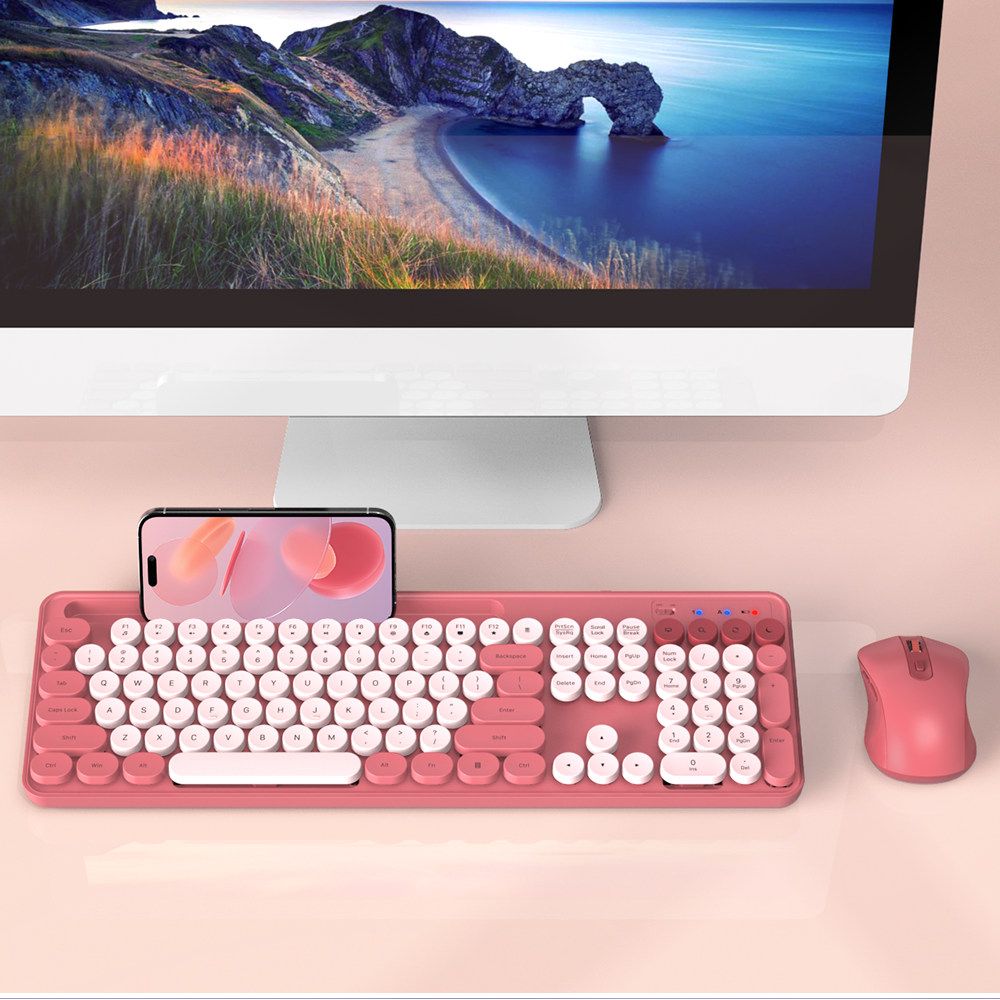How to Choose the Right Office Keyboard: The Key to Boosting Your Work Efficiency

In the modern workplace, we interact with computers extensively every day, and the keyboard is the bridge between us and the digital world. Choosing the right office keyboard can not only improve work efficiency but also reduce fatigue caused by long hours of typing. Here are some key factors to consider when selecting an office keyboard.
1. Comfort: How Long Can Your Wrists Handle It?
Comfort is one of the most important considerations when choosing an office keyboard. Prolonged use of the keyboard can lead to wrist pain, and in more severe cases, conditions like carpal tunnel syndrome. Therefore, the feel of the keys and the key travel are crucial factors when selecting a keyboard.
- Keyboard Tilt Angle: Some keyboards feature adjustable tilt angles, which help adjust the wrist angle during typing, alleviating discomfort.
- Wrist Rest Design: Keyboards with wrist rests can effectively reduce wrist pressure, making them ideal for users who type for long periods.
2. Keyboard Type: Mechanical or Membrane?
There are two main types of office keyboards: mechanical and membrane. The choice depends on your needs and personal preferences.
- Mechanical Keyboards: Each key on a mechanical keyboard has an independent mechanical switch, providing better feedback and a longer lifespan. For those who enjoy a "clicky" typing experience, a mechanical keyboard is a great choice. However, mechanical keyboards tend to be noisier, which may disturb colleagues.
- Membrane Keyboards: Membrane keyboards use plastic membranes as switches, making typing quieter, suitable for environments that require silence. They are usually more affordable than mechanical keyboards.
3. Keycap Material: Durability for Long-Term Use
The material of the keycaps is also an important factor in the keyboard's lifespan. Common materials include ABS (Acrylonitrile Butadiene Styrene) and PBT (Polybutylene Terephthalate):
- ABS Keycaps: These are cheaper but wear out over time, resulting in a smooth surface.
- PBT Keycaps: These are more durable, less prone to wear, and have a longer lifespan.
If you type frequently, it is recommended to choose PBT keycaps, although they may be a bit more expensive.
4. Wireless or Wired?
Wireless keyboards offer more freedom, especially for those who prefer a clean desk. Wireless keyboards usually connect via Bluetooth or a wireless receiver. However, wireless keyboards require regular battery changes or charging.
Wired keyboards, on the other hand, avoid battery issues and provide stable connections. They are ideal for users who need high efficiency and don’t mind cables. Wired keyboards also have faster response times and aren’t affected by wireless signal interference.
5. Keyboard Layout: Full-Size or Compact?
There are various keyboard layouts to choose from, depending on your usage habits:
- Full-Size Keyboard: A full-size keyboard includes all letters, numbers, function keys, and a numeric keypad, suitable for environments that require frequent number input.
- Compact Keyboard: A compact keyboard omits the numeric keypad, making it more suitable for users with limited desk space or those who don’t need to frequently input numbers. It’s an excellent choice for those who prefer a minimalist design.
6. Keyboard Noise: Consider Your Environment
Keyboard noise is another crucial factor, especially in shared office spaces. If you need to work in a quiet environment, choosing a low-noise keyboard becomes essential.
- Mechanical Keyboards tend to be louder, making them suitable for solo work or those who are not concerned about noise.
- Membrane Keyboards are quieter, making them ideal for office spaces that require silence.
7. Keyboard Backlighting: Enhancing Work Efficiency
The advantage of backlit keyboards is that they allow you to work in low-light environments, especially useful for night work or dimly lit spaces. If you need to work at night or under low light, choosing a backlit keyboard will make it easier.
8. Additional Features: A Convenient and Efficient User Experience
Many office keyboards offer extra features, such as:
- Shortcut Keys: Some keyboards are designed with dedicated shortcut keys to adjust volume, play music, or open frequently used programs. These shortcuts significantly improve work efficiency.
- Multi-Device Support: Some keyboards provide multi-device support, allowing users to switch between devices with the press of a button, which is perfect for those who need to operate multiple devices simultaneously.
9. Price and Brand: Choose a Reliable Brand
There are many office keyboard brands on the market, with prices ranging from tens to hundreds of dollars. When selecting, it’s important not only to consider your budget but also to choose a reputable brand. Well-known brands like Logitech, Dell, and Razer often provide better user experiences and longer warranties.
Conclusion
Choosing the right office keyboard is a critical step in improving work efficiency and protecting your health. Whether it’s comfort, keyboard type, layout, noise control, or additional features, these factors all affect your daily experience. Choose a keyboard that meets your needs, enhances work efficiency, and ensures comfort during long hours of use. If possible, it’s best to try out the keyboard’s feel before making your decision.
By considering these factors, you will surely find an office keyboard that meets your needs and provides a comfortable typing experience.
